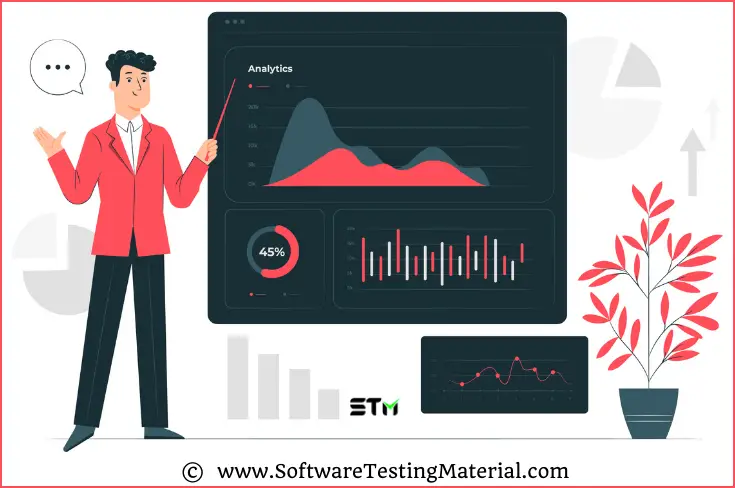How To Choose A Test Management Tool

Are you looking for some tips to choose a test management tool for your business?
You are in the right place.
Here we will discuss how to select the best test management tool and the following.
As the age of digital transformation has forced organizations to rethink the way speed and quality of their releases, test management, and test management tools become an important part of the conversation.
What is a Test Management Tool?
Test management tools help you in managing the testing process. It allows you to gather requirements, design test cases, executing them, generating reports, monitoring metrics, and integrating with third-party defect tracking tools and test data management tools.
In the market, we can find many test management tools and every company is selecting one for their usage.
Here in this article, we will list selection criteria that help you find the best tool.
Most businesses choose a test management tool based on the feature-set offered and their budget.
However, beyond the basic features, there are certain questions and considerations that can make a stark difference to your team members in the way they collaborate, report bugs, integrate with other tools, run execution results, etc.
Be it a traditional, waterfall-based development project or an Agile type approach, the aim of testing is to ensure that the product works, the end-user is satisfied with the experience and there are no glitches or defects that hamper the function of the product.
This means that the QA (Quality Assurance) teams need to verify – whether the requirements have been fulfilled and that there are no new undesirable or additional features that impact the product.
Research indicates that software quality assurance accounts for more than 50 percent of the total cost of the software. The percentage is even higher for critical software. So, choosing the right test case management tool is even more important.
Selecting the right test management tool helps you stay on top of the development, the quality, major bugs, and the release readiness. With such a wide range of tools available in the market, it is easy to get confused and lost. Here is a guide to help you choose the right one:
Key Parameters for Selection of Test Management Tools
1. Budget

You can’t really compare the features of tools that are at opposite ends of the cost spectrum. Be sure that you begin with a ballpark estimate of how much you want to invest in your test management tool.
This includes the cost of each license. There are several models in existence such as pay per user, concurrent users, or persistent users. Not all vendors support run-time licenses, so you need to consider the run-time license expense as well.
2. Productivity

Once you have filtered out the major candidates for selection based on the budget, you can look at the finer aspects from a productivity standpoint.
Using the right tool, you will notice immediate productivity and efficiency gains. For instance, the tool must help you manage the STLC from end to end. You should be able to track and update the list of modules under test and being released. It should also have a test repository that provides a single version of the truth to all stakeholders so there is no confusion in understanding the requirements.
The tool must also provide the granularity of test detail. This means full visibility and transparency across all stages of the STLC. The test reports generated can help you tell exactly at which point the test failed so you don’t waste much time in tracing and replicating the bug.
In addition, the tool must help you to
- Document test strategies
- Maintain test case versions
- Log defects
- Link user stories
- Plan test execution
- Annotate and take screenshots easily
While a number of teams have adopted the Agile and DevOps approach to working, the tool should facilitate both Agile and Waterfall methodologies.
3. Integration support

Test automation has revolutionized the quality assurance ecosystem. It helps teams to shift left by executing tests throughout the development cycle. It enables continuous testing – that is testing at every stage of the CI/CD pipeline.
The growing importance of test automation needs a test management tool that can easily integrate with automation tools and various other CI/CD tools.
Ensure that the tool you select can manage test scripts both locally and on the host, also the ability to store test automation results.
If the tool supports Continuous Integration, then the tests get launched automatically with set triggers such as commits and scheduled tasks.
Most teams today use bug tracking tools like Jira, Bugzilla, Mantis, etc. Check whether your shortlisted tools integrate with these bug tracking apps or other SDLC apps.
The advantage of such integration is that users can easily link bugs to test case runs and benefit from advanced traceability.
You can set your integration benchmark based on your needs. For instance, if you want the test management tool to support various DevOps tools in your pipeline from version control tools, CI tools, Continuous Testing and Deployment tools, and monitoring applications.
Many modern test management tools offer open APIs for custom support and integration. This helps you to perform any task programmatically and integrate your test repository with other tools or in-house systems.
4. Quality Analytics

Quality Analytics and test reports provide actionable insights to Agile teams to better understand the project status and product readiness for go-to-market.
The tool that you select must have a sophisticated reporting function to help all stakeholders make informed decisions.
For instance, the ability to generate a report on demand. A project team lead wants a report that shows the number of test cases executed per release or Defect by status for multiple projects. The right test management tool offers user-defined custom reports where users input the criteria for generating data.
Advanced reports give agile teams the desired customizations and flexibility of generating reports based on their data visualization needs. For technical users, there might be a need for a tool that supports SQL queries to generate specific reports along with features like queries so you can get the desired information quickly.
5. Support and training

Many test management tools have attractive features and benefits but seem to lag when it comes to the right support.
Training and support are equally important when it comes to your test management tools and journey. For instance, do they have enough training guides and videos? Will they walk you through specific aspects or features of test management that can help you choose better?
Support is additionally important when you switch from a legacy tool or a comparable test management tool. Timely Support and training can make all the difference in your test management journey.
How do these parameters translate in terms of essential features?
To check whether your test management tool fits the bill here is a quick checklist.
Checklist To Select A Test Management Tool
- Seamless tracking capabilities
- Easy test execution
- Support for Exploratory Testing
- Requirements management
- Real-time reporting and analytics
- Custom dashboard and gadgets
- Support for Test Automation and Continuous Testing
- Migration utility
- Version control
- Integration with bug tracking, DevOps, and Test Automation tools
- Complete test coverage and end-to-end traceability
- Easy migration and import/export capability
Should you opt for open-source or commercial tools?
For organizations that need an evolved, enterprise-grade test management tool, commercial tools are a better choice. Simply because they support the evolving needs of DevOps and Agile teams with a faster product release cycle and built-in compliance features.
Open-source tools might work for smaller teams, that have very limited use or requirement for a comprehensive, feature-rich tool. It is also worth remembering that open-source tools are much slower than commercial ones in addressing performance issues. They may also lack in terms of providing support and training.
Conclusion
When making the ultimate decision, weigh in factors like adaptability to various development methods, user-onboarding time, usability, integration support, version control, budget, and security features.
Related posts:
- Best Test Management Tools
- Guide To Select Best Automation Testing Tool
- Best Automation Testing Tools
- Best Cross Browser Testing Tools







